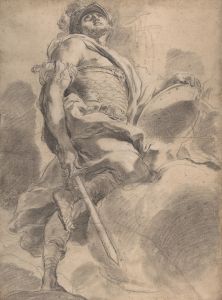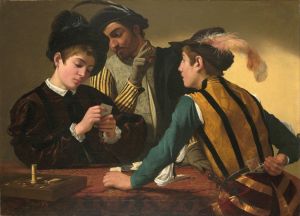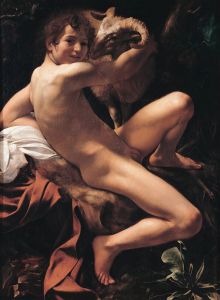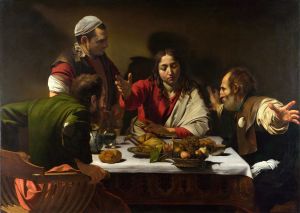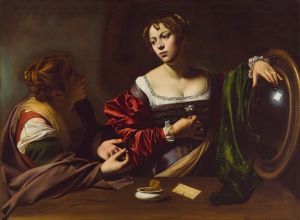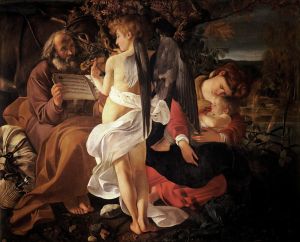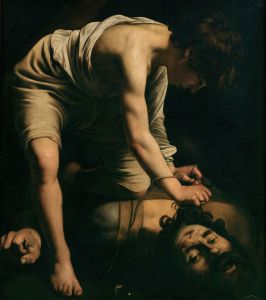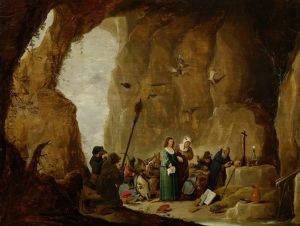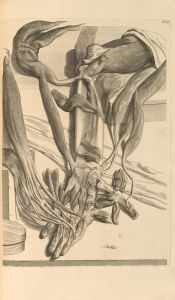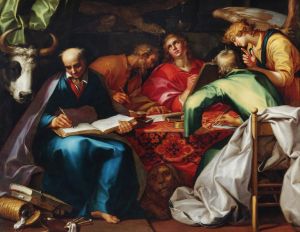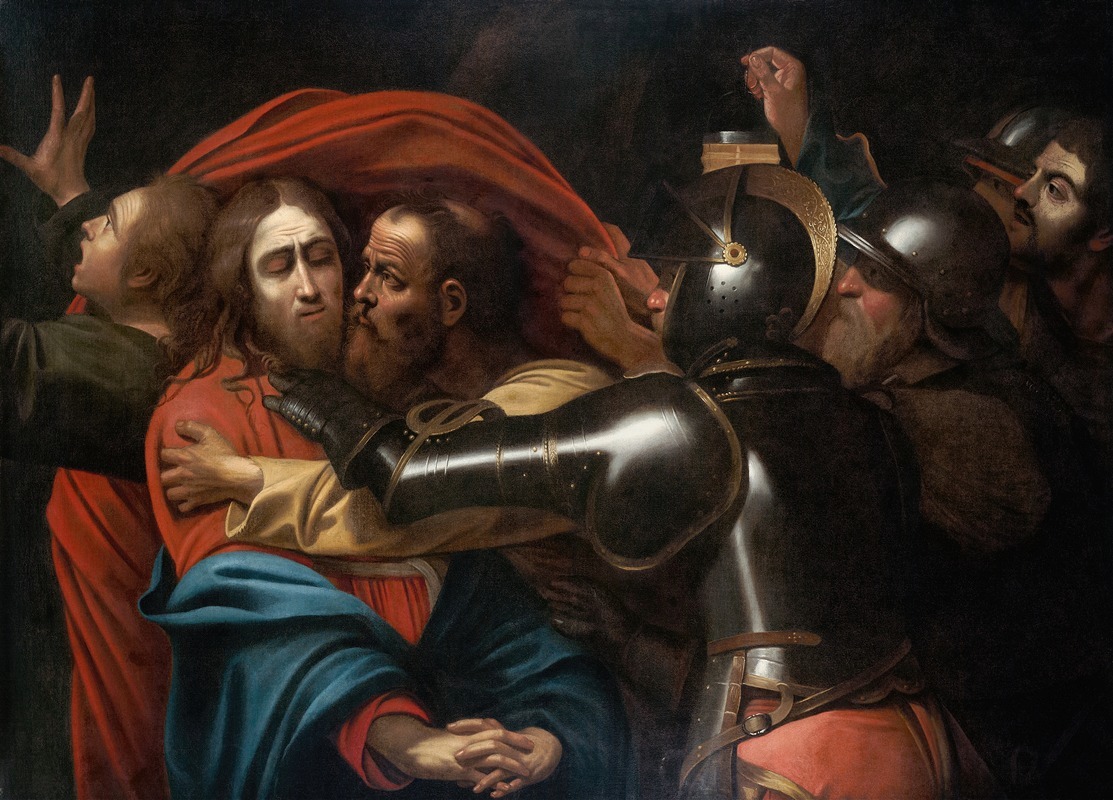
The Taking of Christ
A hand-painted replica of Caravaggio’s masterpiece The Taking of Christ, meticulously crafted by professional artists to capture the true essence of the original. Each piece is created with museum-quality canvas and rare mineral pigments, carefully painted by experienced artists with delicate brushstrokes and rich, layered colors to perfectly recreate the texture of the original artwork. Unlike machine-printed reproductions, this hand-painted version brings the painting to life, infused with the artist’s emotions and skill in every stroke. Whether for personal collection or home decoration, it instantly elevates the artistic atmosphere of any space.
"The Taking of Christ" is a painting by the Italian Baroque master Michelangelo Merisi da Caravaggio, created in 1602. This work is a dramatic depiction of the arrest of Jesus, a pivotal event in the Christian narrative of the Passion. The painting is renowned for its use of chiaroscuro, a technique that contrasts light and dark to create a sense of volume and three-dimensionality.
In "The Taking of Christ," Caravaggio captures the moment when Jesus is betrayed by Judas Iscariot and arrested by soldiers. The composition is tightly packed, with seven figures filling the canvas. At the center, Jesus is depicted with a serene and resigned expression, his hands clasped in submission. Judas, identifiable by his yellow cloak, is seen giving Jesus the infamous kiss of betrayal. The soldiers, clad in armor, are shown in the act of seizing Jesus, their faces partially obscured by helmets and shadows.
One of the striking features of the painting is the use of light. Caravaggio employs a single light source coming from the left, which illuminates the faces of Jesus and Judas, drawing the viewer's attention to the central act of betrayal. The light also highlights the intricate details of the soldiers' armor and the folds of the garments, enhancing the realism of the scene.
To the right of Jesus, a figure holding a lantern is believed to be a self-portrait of Caravaggio. This inclusion of the artist himself adds a layer of personal involvement and immediacy to the scene. The background is dark, with no discernible setting, which focuses the viewer's attention entirely on the figures and their interactions.
"The Taking of Christ" was commissioned by the Roman nobleman Ciriaco Mattei, a significant patron of Caravaggio. The painting was part of the Mattei family collection for many years before its whereabouts became unknown. It was rediscovered in the 1990s in the residence of the Jesuit Fathers in Dublin, Ireland, where it had been mistakenly attributed to a different artist.
The painting is now housed in the National Gallery of Ireland in Dublin, where it is considered one of the most important works in their collection. Its rediscovery has been hailed as one of the most significant art historical finds of the 20th century.
Caravaggio's "The Taking of Christ" is celebrated not only for its technical mastery but also for its emotional intensity. The expressions and gestures of the figures convey a range of emotions, from the calm resignation of Jesus to the aggressive determination of the soldiers and the conflicted feelings of Judas. This ability to capture complex human emotions is a hallmark of Caravaggio's work and contributes to his enduring legacy as one of the greatest painters of the Baroque period.






